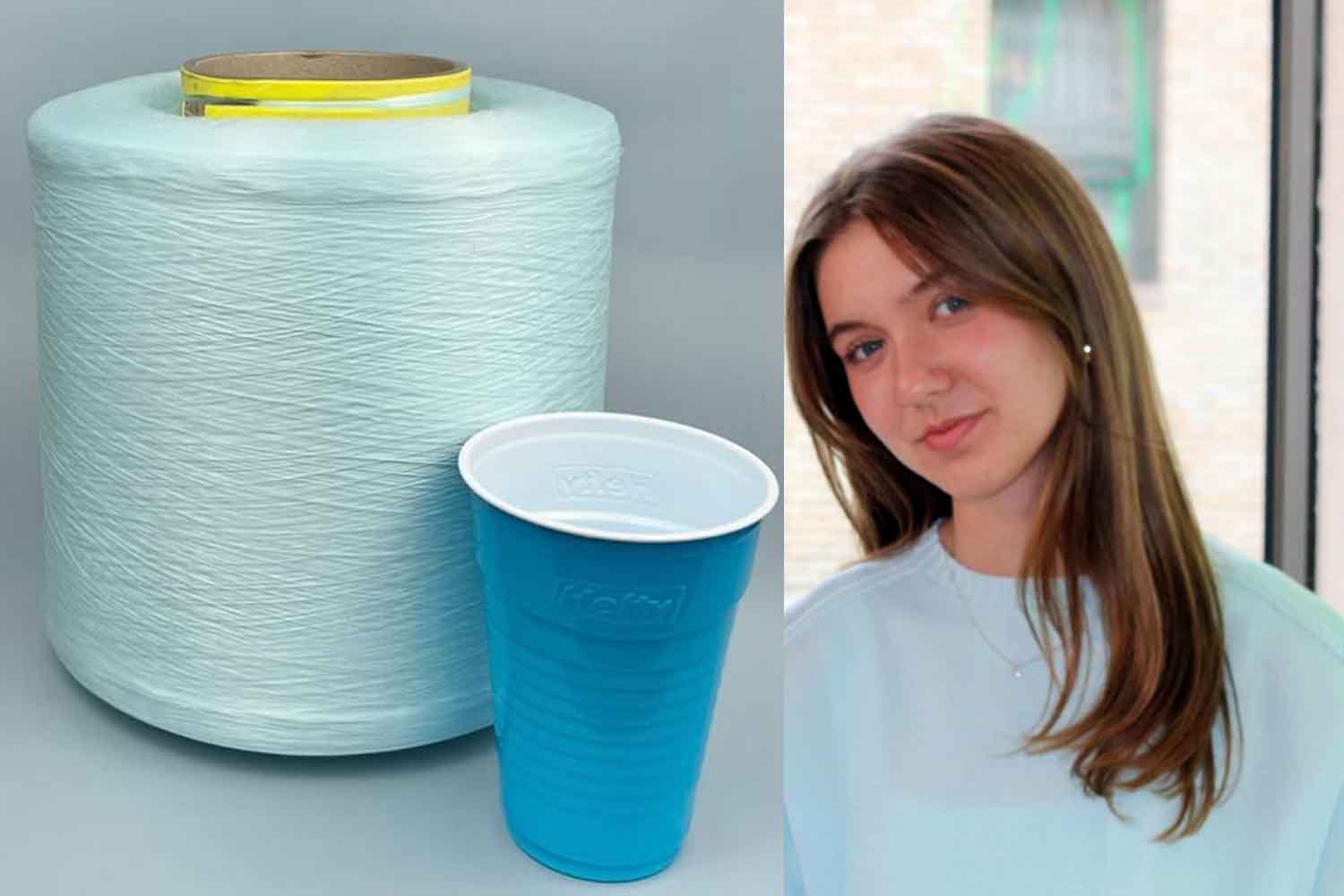From college cups to clothing: The New Norm transforms plastic waste into fashion with 3D knitting, zero dyes and fewer microplastics.

Instagram – @thenewnormcollective
In the United States, those bright plastic party cups are as much a part of college life as beer pong and late-night pizza. They’re cheap, sturdy and disposable—millions are tossed every year. The problem is, they’re nearly impossible to recycle. Most recycling facilities don’t have the equipment to handle the mix of plastics used to make them.
Lauren Choi, then an engineering student at Johns Hopkins University, looked at the pile of discarded cups around her and asked a simple question: why not turn them into textile yarn? That was the spark behind her project, The New Norm.
A garage experiment that became a startup
After graduating in 2020, Choi secured funding for an industrial extruder—a machine that melts and pulls shredded cups into a continuous filament yarn. She had already tried to build one herself in her parents’ garage while still in school. She knew the machine was the key to turning her idea into something real.
To improve the yarn’s texture, she teamed up with researchers at two other U.S. colleges who developed a natural, non-toxic additive. The result was a softer filament, safe to wear against the skin.
The real turning point came when Reynolds Consumer Products, parent company of Hefty and one of the biggest producers of plastic cups, decided to back her project. A paradox, yes—but also a telling sign of how the industry is shifting.
Why microplastics matter
Today, production takes place in North Carolina and Virginia, where collected cups are shredded and converted into filament. Unlike traditional multi-ply yarns (think wool), Choi’s continuous filament doesn’t shed microplastics in the wash.
That detail is crucial. Every time we wash polyester or nylon clothing, tiny fibers break off and seep into waterways, eventually reaching the ocean. With New Norm’s yarn, that risk drops dramatically.
And the innovation doesn’t stop there. The clothes—mainly sweaters and beanies—are made using 3D knitting, a process that creates an entire garment in one piece. As Choi explained to The Guardian:
“With 3D knitting, you generate far less waste compared to traditional cut-and-sew. Our garments come off the machine fully formed: no seams, just one single piece.”
No scraps, no wasted fabric. Everything gets used.
Color without chemicals
Another striking detail: no dyes are added. The pastel shades—soft yellows, greens, pinks and blues—come directly from the original cups themselves. Each item carries with it a visual story of the materials it once was.
A collection that sells out in hours
Today, The New Norm is based in a Brooklyn workshop where 3D knitting machines spin the recycled yarn into simple but carefully designed pieces. Prices range from $45 to $85 (about €42–€80), fairly accessible for garments made ethically, without exploitation and from waste materials.
Shoppers clearly agree. New drops often sell out within hours. That success has encouraged Choi to expand: she is now working with companies eager to test the yarn’s durability for industrial textile applications.
What began as a garage experiment has grown into a sustainable supply chain that blends innovation, style and environmental responsibility. It’s not just a startup. It’s a living example of the circular economy in action.
